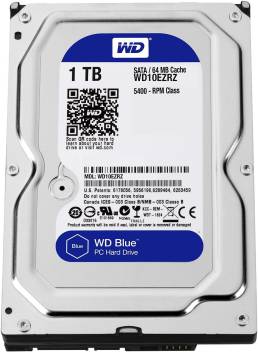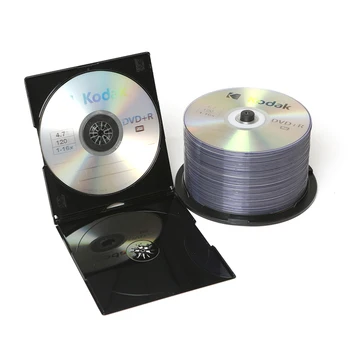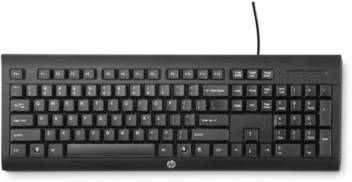Day
1.
Personal computer
(PC): When we say “PC” we refer to those personal
computers that have Intel x86 (central processing unit) and run on Microsoft
windows operating systems. There are other PCs like Apple’s Macintosh. But, we
are not talking about them. The PCs that we talk about are those that belong to
the family of PCs made by IBM (International Business Management Machines), the
biggest and oldest computer.
PC: The IBM PC released in 1981, It had Intel 8088 chip
as its CPU Microsoft’s PCDOS as its operating system. Though Intel’s 16-bit
8086 were available, IBM selected the less powerful 8088 Microprocessor to
reduce the cost of the PC. The operating system PCDOS became very successful
though it did not have like sub-directories and hard disk support. It had 4”
tall floppy disk drivers that ran 8” diskettes, a had 256KB RAM and had space a
maximum of only five add on cards.
PC-XT: IBM
introduced its next model called PC-XT (“XT for extended Technology).This
PC a few additional features over the original PC and hence the ‘XT’. The PC-XT
had built-in 10 MB hard disk and had 8 bit input and output slots, greater
power supply capacity and completely socketed memory. This Pc completely
different mother board circuit to support hard disk and ram expansions up to
640kb. The reset button was introducing this model.
PC-AT: In 1984, IBM introduced the AT (short for Advanced
Technology) which was five times faster than XT. This computer’s Intel 80286
CPU set the standard for the all other PC type computers. Intel’s 286(‘80’ is
dropped) chip is a 16 bit processor. It supported 16 bit bus transfer and 24
bit memory addressing. By a memory management feature called “Protected Mode”,
the processor supports to allowed access of up to 16 MB and could support muti-
tasking operating system like UNIX. It also support to three more DMA(Direct
Memory Access). After The 8086 chip, Intel produced chips by the names 80186,
80286, 80386 and 80486. Each chip had new features old chips.
Pentium: Pentium was introduced in 1993. Pentium as 64 input output pins but
internally processes 32 bit at a time. In addition to all the instructions of
previous x86 processors it has few new ones also. It has 16KB level-one
built-in cache memory which double 486 processor.
Pentium with MMX was the next chip introduced by the intel. Its instruction set has additionally
a new class of instructions called “Multi media eXtensions”(MMX).These
are 57 new integer instructions and several data types. These will be helpful
in multi-media applications that include visual complex graphics tasks as well
as full – motion video and high-quality sound.
Pentium II : In the middle of 1996, Intel
brought out Pentium II. Effectively, it is slightly improved Pentium pro Plus
MMX technology. But the level-two cache is on separate chip and expanded to 32
KB. Processor speed is 533, 500, 466 MHz.
Pentium III : This
processor release by Intel in 1999. This processor is faster 450MHz and as new
instructions. These instructions make it possible to run 3D graphics imaging,
stream video, speech recognition and audio applications quickly. PIII
processors are now available with clock speeds to Up to 1.0 GHz.
Pentium VI : Intel corporation announced on June
28, 2000 the Intel ® Pentium ® 4 proccessor brand for its new generation of
desktop micro processors. Scheduled to be introduced in the second half of
2000, The new Pentium 4 processor is based on
revolutionary technology designed to maximize performance today and in
the future, keeping consumers on the cutting edge of the Internet.
A SYSTEM CONTAINS FOLLOWING PERIPHERALS:
Ø Main Board
(Mother Board)
Ø Processor
Ø Ram (Random
Access Memory
Ø SMPS (System
Main Power Supply)
Ø Cabinet
(System Case)
Ø HDD (Hard
Disk Drive)
Ø Monitor
Ø Floppy Disk
Drive
Ø CD Rom or
DVD Rom
Ø Keyboard
Ø Mouse
Mother Board : The mother board is the most
important component in a PC system. The main purpose of the mother board is to
interconnect the several functional parts of the PC. There are several on the
board for this purpose. For example, to connect a floppy drive to your PC you
have plug in IDE(Integrated Device Electronics) card on the slot meant for
this. Add on cards like this IDE Card are called daughter boards (non
son-boards)
There are different types of
interface cards that can be attached to a PC. These interface cards are
inserted into one of input output expansion slots available in the mother board
in old mother boards.
The following are the most common
interface cards are used in PCs. In old model mother boards
-
Video Display Card : Used to connect Monitor
-
IDE cards : To connect Floppy Disk, Hard disk, CD or
DVD Rom Drives
-
Network Interface Card : Used to attach PC to a Local
Area Network
Processor: Different Processors are we
discussed in the following units. All data lines and address lines are made
available for internal operations and are also available on the edge connectors
for interfacing Ex : Pentium I, II, III, IV, Pentium Core 2 Duo , I3 Processor,
Etc.,

RAM: The programs and data are stored in RAM on the mother
board for immediate used by the Processor. The Processor accesses the memory
for data and program random manner. This method of access is Random Access. Each
location of memory has unique address. A single line can address two memory
locations of each one byte. 8088 Processor with 20 address lines can be
addressing 1 MB Memory. But the first 640 KB of the 1 MB memory is addressed as
RAM and remaining addressable memory is used other functions. Most memory
chips are packaged into small plastic or ceramic packages called dual inline
packages or DIPs. A DIP is a rectangular with rows of pins running along its
two longer edges. These are the small black boxes you on SIMMs (Single Inline Memory
Module). DIMMs( Dual Line memory Module ) or other larger packaging styles. The
DIP has been the standard of packaging integrated circuits since invention of
the CPU

SMPS: System Main Power Supply, inside the system unit you
will big gray box with lots of wires running out of it and connecting it to
basically everything. following figure
This gray box is the Power supply.
The power supply converts an ordinary household current into lower voltage
direct current for the parts of the PC.
The power supply has three jobs to
do :
1. Covert wall
outlet A/C electrical power into suitable D/C voltages
2. Monitor
those D/C voltages
3. Remove the
heat that results from consumption of the electrical power.
SMPS voltage
levels and functions as follows
S.No
|
Power
|
Functions
|
1
|
+ 5v
|
Powers the operational circuits on the mother board
|
2
|
+ 12v
|
Power the disk drives (floppy drive, hard disk
drive and CDROM drive) and the system’s dynamic memory
|
3
|
- 5v
|
It is used for memory bias voltage and analog
circuits in the disk adaptor
|
4
|
-12 v
|
The positive and negative 12v dc points powers the
serial interface card
|
The power supply also incorporates a
switching regulator to hold the output voltages very close to tolerances. Hence
this unit is called Switched Mode Power Supply.










